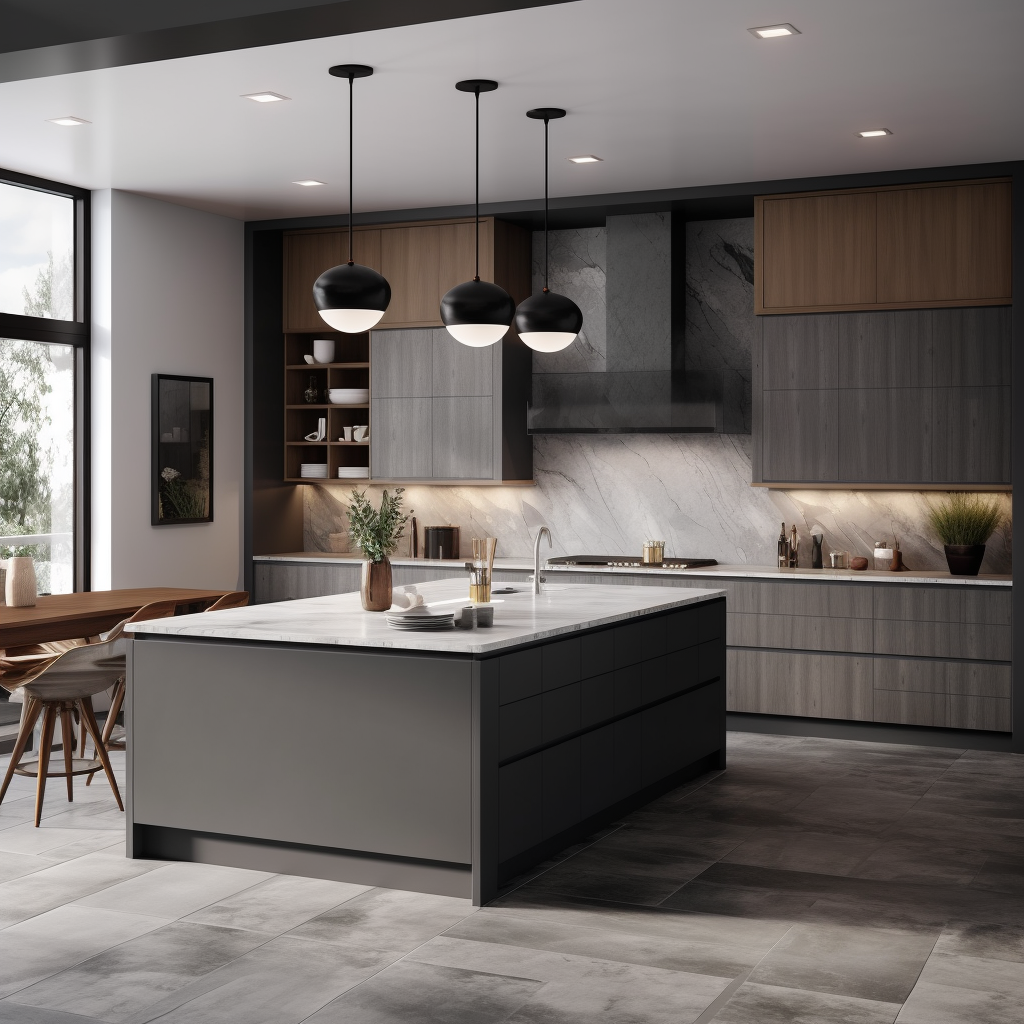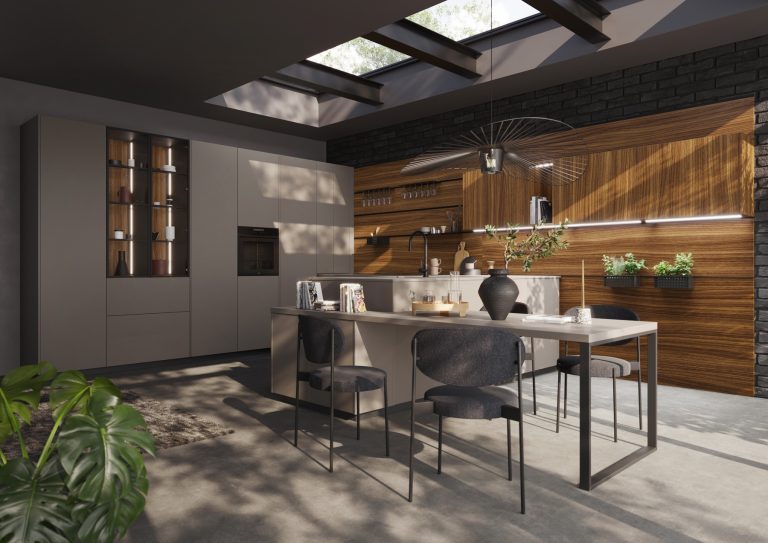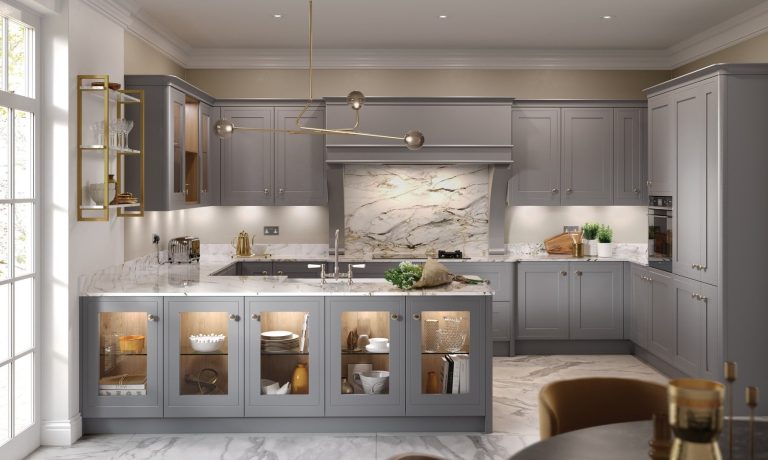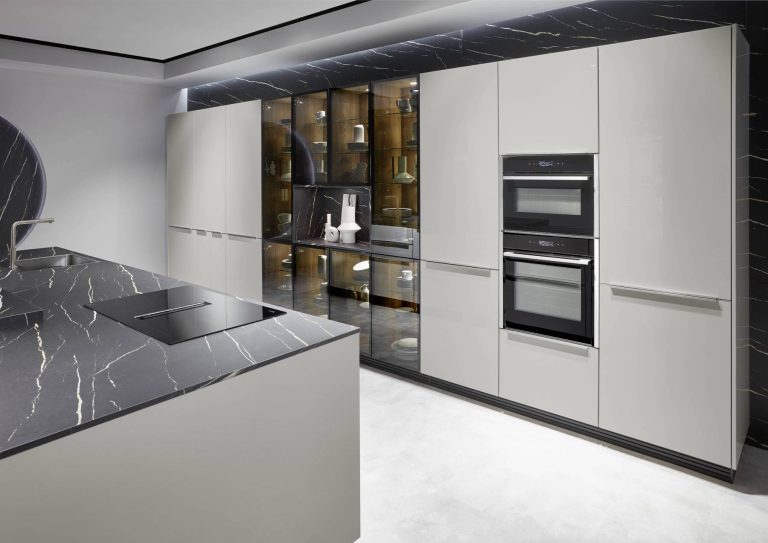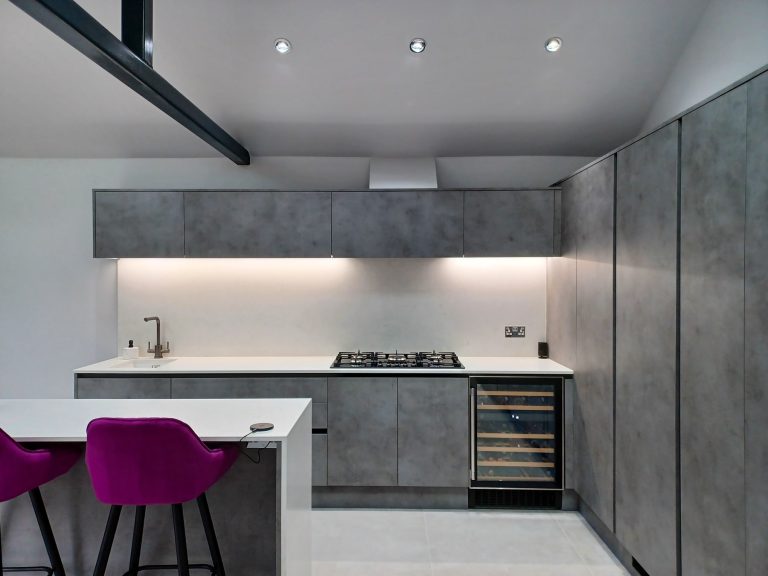What Colour Goes With Grey Kitchen Units?
Grey kitchen units have become increasingly popular in contemporary interior design, providing a sleek and modern appearance that can be easily integrated into a variety of styles. As a versatile and neutral hue, grey offers a multitude of possibilities when it comes to selecting complementary colours, ranging from cool blues and warm earth tones, to bold accents and classic neutrals.
In order to achieve a harmonious and aesthetically pleasing kitchen space, it is crucial to carefully consider the colour palette that will best enhance the grey units and contribute to a cohesive design scheme. The selection of an appropriate colour scheme to accompany grey kitchen units is not only an essential aspect of achieving a visually appealing space but also plays a significant role in creating a welcoming and comfortable environment.
By exploring various colour options, such as cool blues, warm earth tones, bright accents, classic neutrals, and contrasting dark shades, designers and homeowners can develop a unique and personalised kitchen design that reflects their individual tastes and preferences. Furthermore, the intentional choice of colours has the potential to influence the overall atmosphere of the space, with certain hues promoting a sense of calm and relaxation, while others contribute to a more energetic and dynamic ambiance.
Pairing Grey Kitchens with Cool Blues
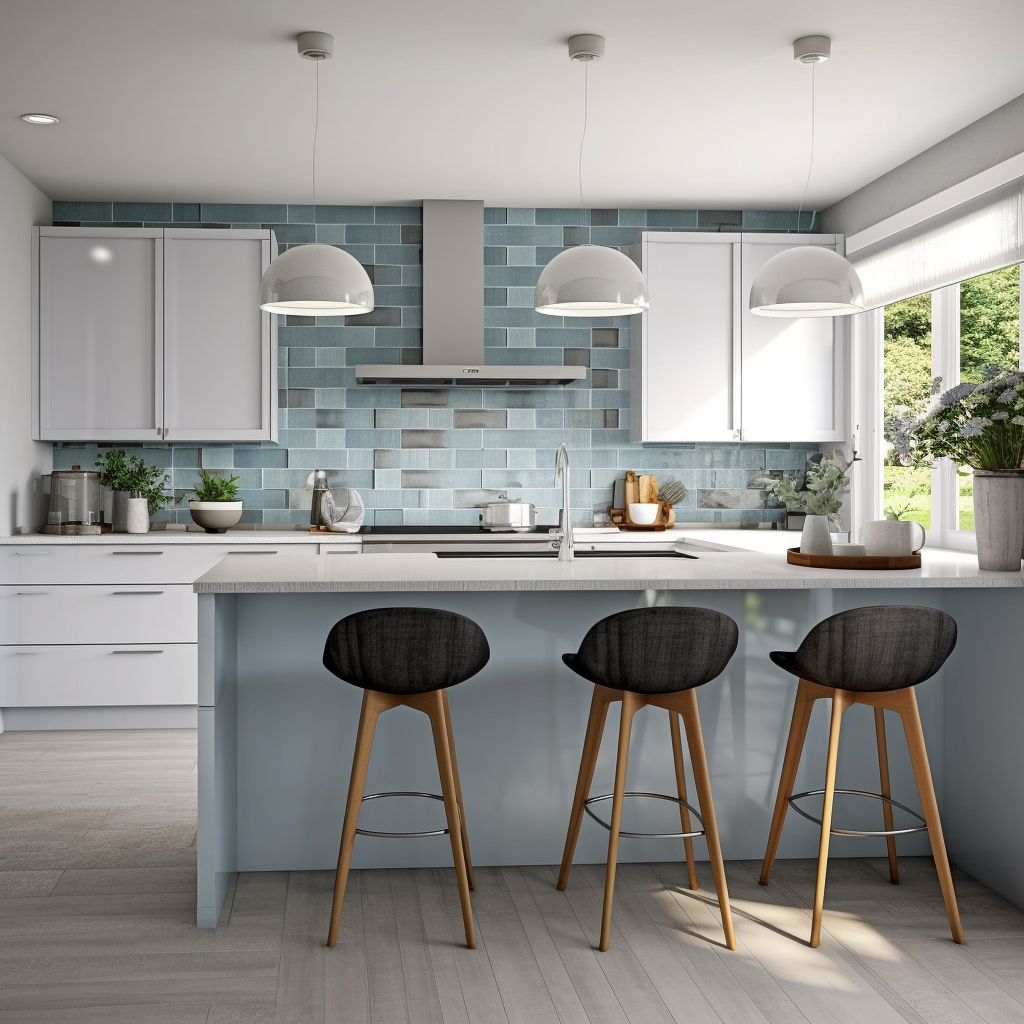
Incorporating cool blues into the design scheme can effectively complement the understated elegance of grey cabinetry, resulting in a harmonious and visually appealing kitchen space.
The utilisation of various shades of blue, ranging from soft and muted tones to more vibrant hues, imparts a sense of calm and serenity, while simultaneously providing a striking contrast against the neutral backdrop of the grey kitchen units.
This juxtaposition of cool colours serves to enhance the overall aesthetic appeal of the kitchen, adding depth and dimension to the space.
Additionally, the incorporation of cool blues in the form of wall paint, backsplash tiles, or even decorative accents, such as curtains or dishware, can contribute to the establishment of a cohesive and well-coordinated design theme.
In order to achieve the desired effect, it is essential to carefully consider the specific shade of blue that best complements the existing grey cabinetry.
For instance, a pale or powder blue may be most appropriate for kitchens featuring lighter shades of grey, as this combination will result in a more airy and spacious atmosphere.
Conversely, kitchens with darker grey units may benefit from the use of bolder and more saturated shades of blue, such as navy or cobalt, which can create a sense of depth and sophistication.
Ultimately, the strategic implementation of cool blue hues in conjunction with gray kitchen units has the potential to yield a visually stunning and harmonious design that is both functional and aesthetically pleasing.
Embracing Warm Earth Tones In Grey Kitchens

Utilising warm earth tones can significantly enhance the aesthetic appeal of a space featuring grey cabinetry, creating a harmonious and inviting atmosphere. Earth tones, such as terracotta, ochre, and warm beige, offer a natural and organic quality to the design scheme, effectively complementing the neutrality of grey kitchen units. When paired together, these colours can evoke a sense of warmth and comfort, making the kitchen feel more welcoming and cosy.
In addition, earth tones can be incorporated through various design elements, such as wall paint, backsplash tiles, and decorative accents, to create a cohesive and visually appealing space.
The following list highlights three effective ways to embrace warm earth tones in a kitchen with grey units:
– *Wall paint or wallpaper:* Choose warm-toned paint colours, such as taupe, light terracotta, or soft ochre, to create a backdrop that accentuates the grey cabinetry while adding warmth to the overall space.
– *Backsplash tiles:* Opt for earth-toned ceramic or natural stone tiles, such as travertine, slate, or terracotta, to create a complementary contrast between the countertops and cabinetry, while also providing a visually striking focal point.
– *Decorative accents:* Incorporate warm earth tones through accessories like pottery, linens, and artwork, which can be easily changed or updated to refresh the kitchen’s appearance without a significant investment.
By incorporating warm earth tones into the design scheme, a kitchen featuring grey cabinetry can be transformed into a cosy and inviting space that reflects the beauty of nature and offers a comfortable environment for cooking and gathering.
Adding a Touch of Boldness with Bright Accents to Grey Kitchens
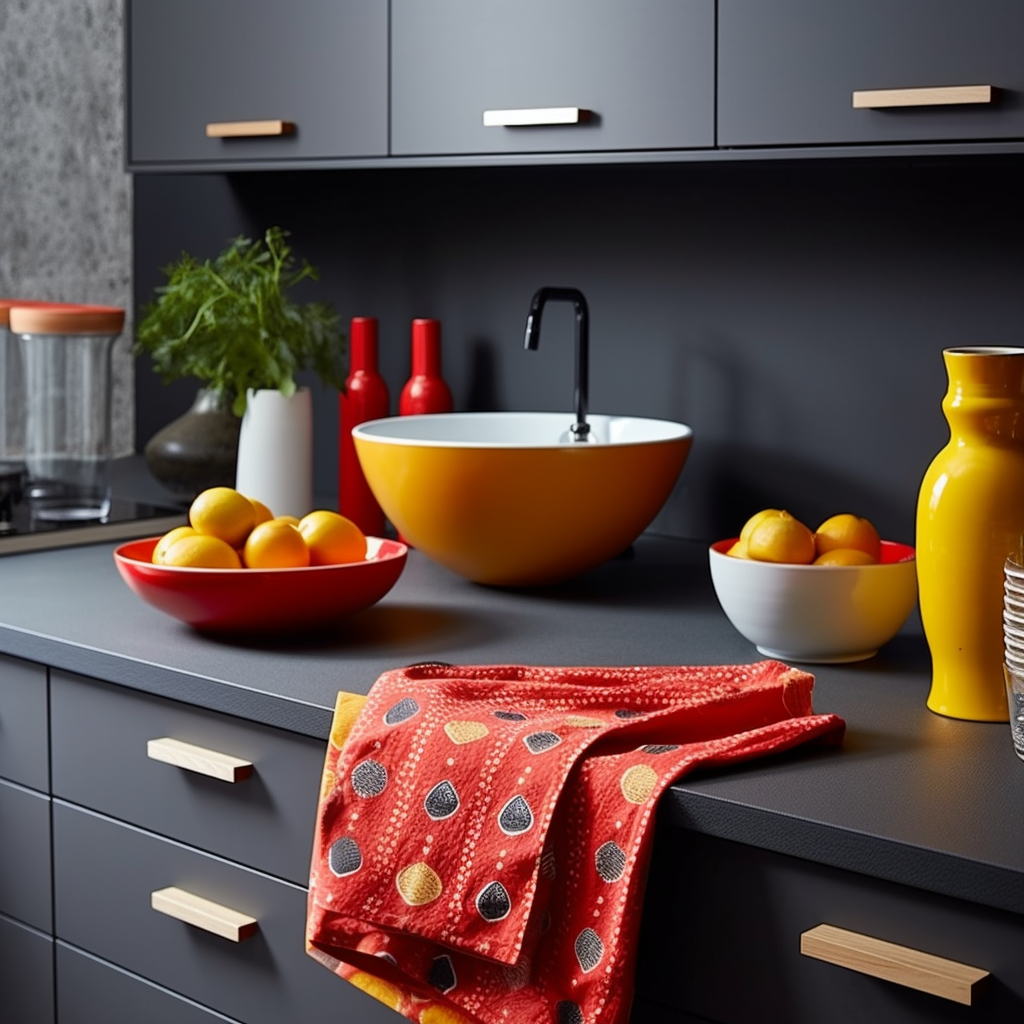
Introducing vibrant accent pieces can effectively elevate the visual appeal of a space featuring grey cabinetry, infusing it with a bold and dynamic energy. The versatility of grey allows for the incorporation of a wide range of bright colours, providing a striking contrast that can create an unforgettable and visually engaging environment.
Some popular choices for bold accents include shades of red, orange, yellow, and blue, each capable of adding a unique flair to the overall design. Additionally, experimenting with patterns and textures can further enhance the impact of these vivid hues, producing a rich and multi-dimensional aesthetic.
Incorporating these bright accents can be accomplished through various elements, such as backsplashes, countertop accessories, light fixtures, and furniture. For instance, a vibrant red backsplash can instantly transform a grey kitchen into a lively and spirited space, while a set of brightly coloured barstools can add an unexpected pop of colour that draws the eye and encourages conversation.
Furthermore, incorporating bold statement pieces, like a vividly hued pendant light or a colourful piece of wall art, can serve as a focal point that anchors the room and unifies the colour scheme. By thoughtfully selecting and integrating these bright accents into a grey kitchen, designers can create spaces that exude both sophistication and personality, resulting in a truly inspired and unforgettable aesthetic.
Combining Grey Kitchens with Classic Neutrals

Pairing grey cabinetry with classic neutrals creates an elegant and timeless appeal, effortlessly achieving a harmonious balance that evokes a sense of tranquillity and sophistication within the space.
Neutrals such as beige, ivory, taupe, black, and white provide a versatile backdrop for grey kitchen units, allowing them to stand out while maintaining a cohesive design. Incorporating neutral-toned countertops, flooring, and walls can further enhance the visual depth and dimension of the space, as the subtle variations in tone and texture create a refined and polished aesthetic.
Additionally, the use of natural materials such as wood and stone further complements the grey colour palette and contributes to the overall warmth and inviting atmosphere of the kitchen.
Incorporating metallic accents in the form of hardware, lighting fixtures, and accessories can also elevate the sophistication of a grey and neutral kitchen design. Gold, silver, and copper tones can add a touch of luxury and refinement to the space, as they contrast beautifully with the understated elegance of the grey cabinetry.
Furthermore, the juxtaposition of these metallic elements with the organic textures of wood and stone creates an interesting visual interplay, adding depth and character to the overall design. To maintain a cohesive and visually pleasing aesthetic, it is essential to carefully consider the placement and proportion of these metallic accents, ensuring that they do not overpower the serene and balanced atmosphere that the combination of grey and classic neutrals evokes.
Enhancing a Grey Kitchen with Contrasting Dark Shades
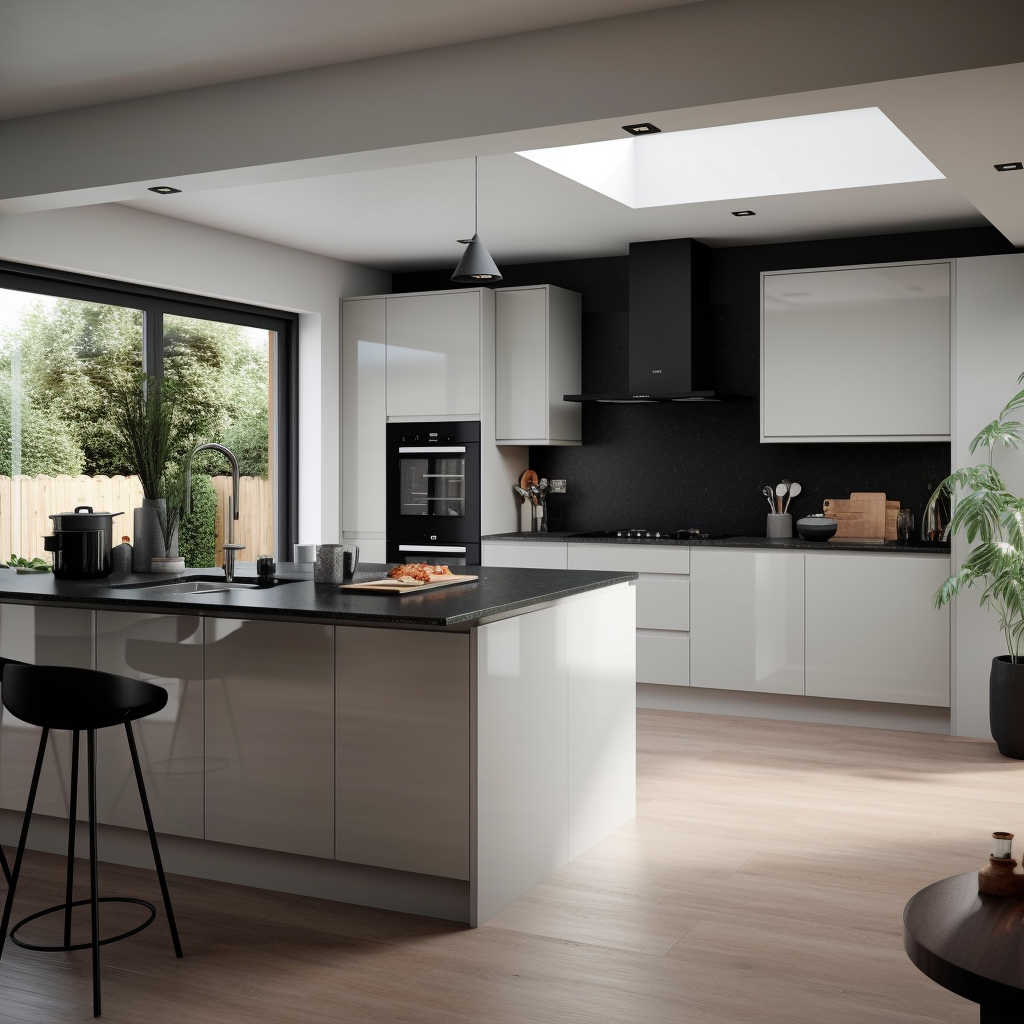
Incorporating contrasting dark shades within a grey-dominated space offers a striking and bold aesthetic that emphasises the cabinetry and adds depth to the overall design. Darker colours, such as black, navy blue, and deep green, can be utilised to create a sophisticated and refined atmosphere, drawing the eye towards the grey kitchen units and providing a dramatic backdrop for other design elements.
This refined contrast can be achieved through various means, such as painting walls, adding a dark-toned backsplash, or utilising dark countertops and flooring materials. Furthermore, by introducing metallic finishes in fixtures and hardware, designers can add a touch of luxury and elegance to the space, further enhancing the visual appeal of the contrasting dark shades.
One popular design approach when incorporating dark shades is to create a two-toned kitchen, where the upper cabinets are a lighter shade of grey, and the lower cabinets are a darker shade or a bold dark colour. This not only adds depth and dimension to the space but also provides a harmonious balance between the cool grey tones and the contrasting darker shades.
Additionally, introducing patterned elements such as geometric tiles or bold wallpaper can add visual interest and serve as a focal point within the space. Ultimately, the use of contrasting dark shades in conjunction with grey kitchen units results in a visually captivating and stylish design, offering homeowners a unique and modern kitchen space that is both functional and aesthetically pleasing.
Conclusion
In conclusion, the optimal choice of colours to pair with grey kitchen units depends on the desired atmosphere and individual preferences.
Combining cool blues, warm earth tones, bold accents, classic neutrals, and contrasting dark shades can result in diverse styles and moods, ranging from calming to invigorating.
By carefully considering various colour options, one can create a harmonious and visually appealing kitchen environment that suits their personal taste and enhances the overall design.
